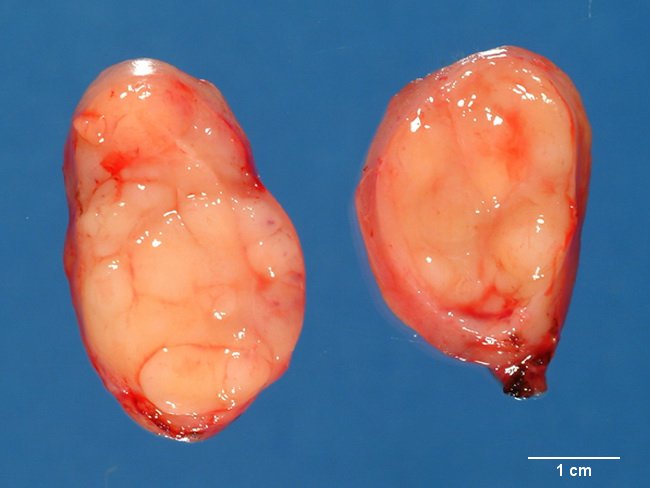Castleman Disease : Introduction


Comments:
Introduction: Castleman disease is a rare disorder involving lymph nodes and related tissues. It has also been referred to as giant lymph node hyperplasia and angiofollicular lymph node hyperplasia. Clinical Variants: The disease may be localized (solitary) or multicentric (systemic). Localized variant is of unknown etiology and presents as a mass-like enlargement of mediastinal or cervical lymph nodes without additional symptoms. It was considered to be a reactive or hyperplastic process. However, evidence of monoclonality in lymph node stromal cells in recent studies have led to the suggestion that is may be a neoplasm. Multicentric Castleman disease has been linked to infection with human herpesvirus 8 (HHV8) in both HIV+ and HIV- individuals. It presents with lymphadenopathy, splenomegaly, anemia, and constitutional symptoms. Morphologic Variants:
Localized Castleman disease is hyaline-vascular (HVCD) type in 90% of cases and plasma cell type in the remaining 10%. Multicentric Castleman disease is almost always of plasma cell type. Only rare cases show hyaline-vascular morphology. The image shows nodal involvement in HVCD. Image courtesy of Dr. Jean-Christophe Fournet, Paris, France; humpath.com; Used with permission



